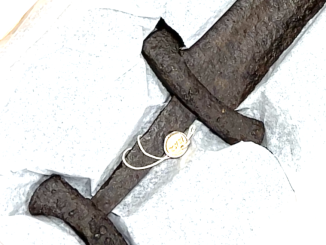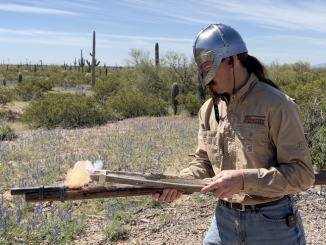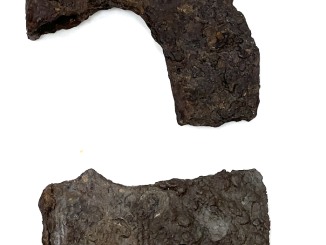Today I have the very cool opportunity to bring you a history of Icelandic domestic firearms manufacturing, courtesy of the Veiðisafnið – the Hunting Museum of Iceland:
https://www.hunting.is/english/
The first documented record of a firearm on Iceland dates to 1482, appearing in a description of a legal dispute between two farmers. The first recording hunting is in 1615, when a polar bear was shot in Hjaltadal (polar bears are not native to Iceland, but occasionally float across on ice form Greenland).
Without any large mammals (reindeer were only introduced in the 1700s form Norway), there has historically been little call for rifles on Iceland. Instead, most of the guns were shotguns, useful for bird hunting. The first known professional gunsmith was Einar Bjarnason, of Skeftafelli in Öræfi. Some time around 1730 or 1740 he worked repairing and maintaining guns. Virtually all were imported from places like Denmark and Norway, but three other gunsmiths did produce guns from scratch over that past few hundred years.
The first was Jósef Jóhannsson in the town of Akureyri. Around 1890, he built a handful of 8 gauge hunting shotguns – but no surviving examples are known.
The second was Jón Þorsteinsson, of Ólafsfjöður. He lived form 1880 until 1968, and was building guns between 1920 and 1956. The total produced is not known exactly, but the best guess is about 30. They were simple break-action shotguns between 12ga and 4ga, with external hammers of cocking levers (the design evolved over time) and no extractor. We have two examples to see in the video.
The third and final Icelandic gun maker was Jón Bjornsson of Dalvik. He was born in 1907 and lived until 1991 – and he did not start making guns until 1977. Bjornsson was a jack of all trades tinkerer, who was know for building everything from hand tools to a washing machine and a violin. Iceland was a poor place during most of the 20th century, and “build it yourself” was the only viable option for many things in the countryside. When Bjornsson did start making guns, he did so with a classic make-do spirit. The barrels were imported axle tube bored out to 12ga, the bolts were made from scrapped boat propeller shaft, and the small metal parts from the runners of common farm sleds.
Bjornsson’s design, which he called the “Drífa” was essentially a simplified copy of the Marlin Goose Gun; a single-shot bolt action gun with a 3 inch 12 gauge chamber. A total of 120 were made, two at a time, between 1977 and 1990 (numbered 101 through 220). This did include five magazine fed examples, which used 2-round Savage detachable magazines imported from the US. Today an owners’ club exists for the Drífa shotguns and the location of every single one is known.
Contact:
Forgotten Weapons
6281 N. Oracle 36270
Tucson, AZ 85740




Hi Ian, a few minor (and admittedly rather petty) corrections: It’s Sk_a_ftafell_ (-i is the dative ending), Ólafsfjö_r_ður, Bj_ö_rnsson and Dalv_í_k – and Hjaltadal_ur_ with the nominative ending for consistency.
“(…)Iceland was a poor place during most of the 20th century(…)”
I must disagree, Iceland was poor prior to WW2, but wealth greatly rose as side-effect of Allied presence during said conflict (see Operation Fork) and then Marshall Plan (observe that whilst absolute value looks tiny compared to other countries, when considering per capita it was one of top recipient belonging to group of countries neutral during said conflict)
Iceland also acquired a lot of redundant allied ships and marine supplies at the end of the war. These were used to build, what was at the time, a relatively modern and powerful fishing fleet which also greatly contributed to their prosperity.
Also I would forget to add that WW2 damage in Iceland was minimal, so they could Marshall Plan aid to improve rather than restore.
That’s quite impressive skill to drill a 12 ga hole through an axle and then turn it down into a functional shotgun bbl. Shot my 1st squirrel w/ a 16 ga bolt gun.
Wow. The gun is allowed in Iceland? But I really want to see this gun.
It’s funny how people take someone else’s invention, change it just a little, and call it their own.